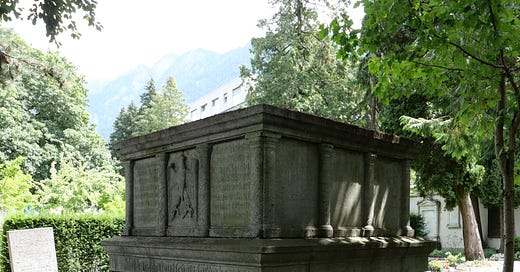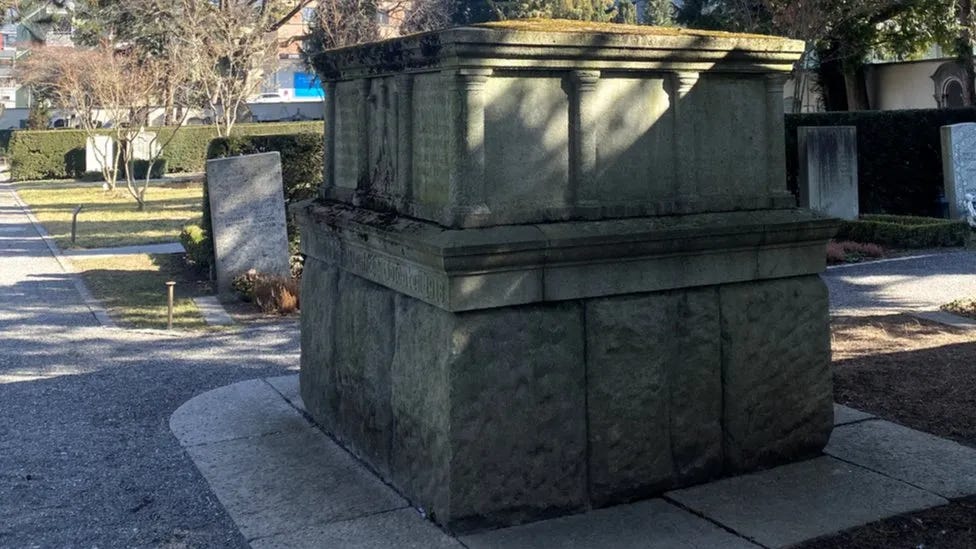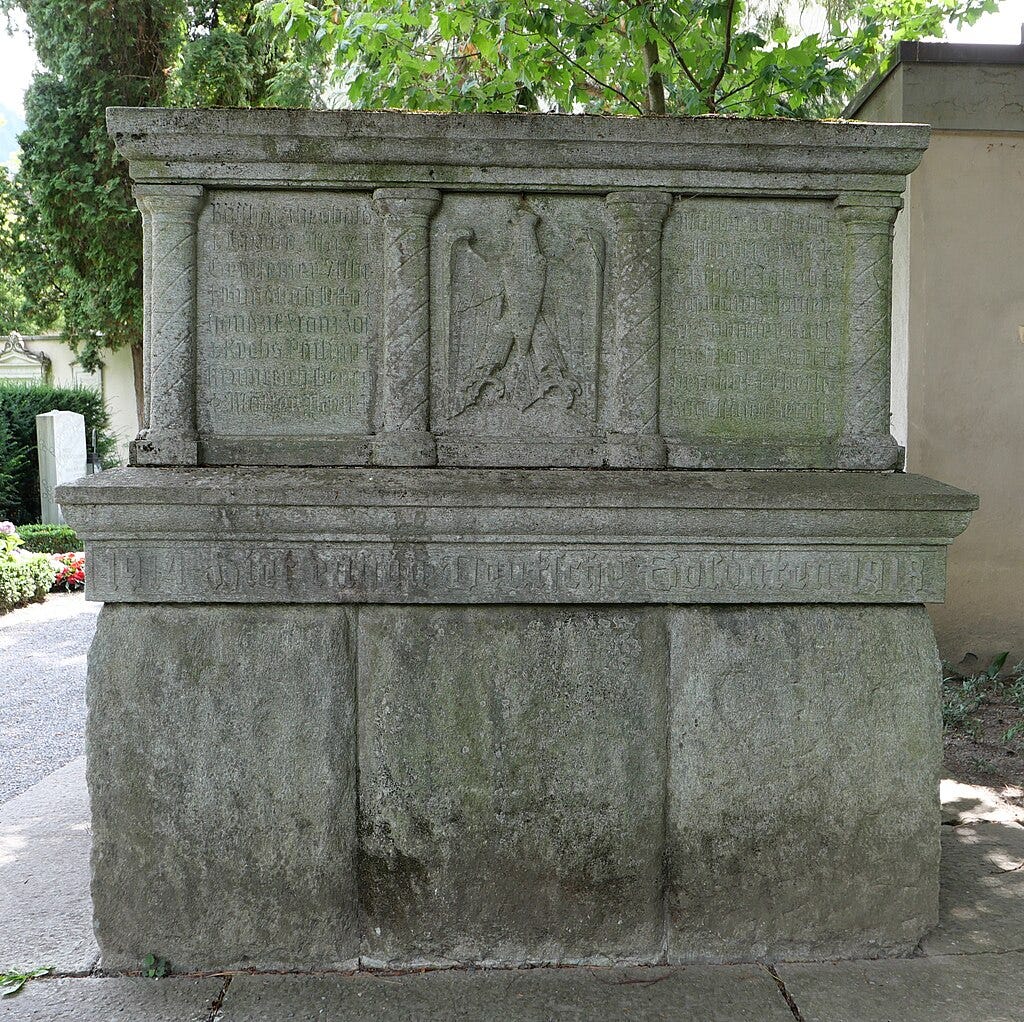Free Article: Switzerland's Nazi Memorial
The story behind the Nazi memorial stone in the Swiss town of Chur.
For decades, a huge monolithic bloc of granite in the middle of the cemetery in the Swiss town of Chur was ignored by passes-by. No one seemed to know what it was. The monument, weighing 13 tonnes, dwarfs nearby gravestones and has been a source of controversy and embarrassment after research by a local journalist revealed that the monolithic block has links to Nazi Germany.
At the same time, it highlights neutral Switzerland’s awkward relations with its neighbours who were actively engaged in prosecuting the Second World War. He cemetery in Chur is in the centre of the town. Many people pass by it every day when going to work or when going out shopping. Today, the monument is untended and is covered by moss making the engravings difficult to discern.
At first sight, the monument appears to be a war memorial, however, faint lettering on the object states:
1914-1918 Hier Ruehn Deutsche Soldaten (1914-1918 Here Lie German Soldiers).
The question abounds as to why German soldiers would be buried in Switzerland, a country which has historically been neutral. Thousands of wounded prisoners of war, both French and British, as well as German, were treated and interned in Switzerland during the course of the First World War. Some of the wounded prisoners of war died of their injuries whilst in Switzerland, while others died during the 1918 flu pandemic.
The monument in Chur was not built until 1938, twenty years after the men that the monument commemorates had died. Indeed the monument was not built to mourn the dead soldiers. Instead, it was built for propaganda purposes. As the National Socialists (Nazis) grew in power in Germany, their propaganda involved a cult-like worship of their war dead. In the 1930s, the German war graves commission became part of Hitler’s propaganda machine. The task of the German war graves commission was to create visible signs of Nazi power in Germany’s neighbours as well as at home..
There were many thousands of Germans living in Switzerland at the time and they were organised. Various organisations prevalent in Germany could also be found in Switzerland, such as the National Socialist Party, the German labour front and the Hitler Youth. They were, however, organisations which were only open to Germans and not to members of the Swiss population.
Germany’s war grave commission submitted ambitious plans to built a vast mausoleum in the Swiss town of St. Gallen which were rejected by the Swiss authorities. A monument in Chur was, however, approved. Polished and engraved in Munich, the monolith was delivered to Chur on the eve of the Second World War. At the time Chur’s residents would have known what the monument was for. Indeed, on Nazi holidays, Swastikas were placed on the structure. Some residents were unhappy with the monument with at least one indignant letter being written in 1938 to the local newspaper, the author of which questioned ‘why do we have a Nazi stone in our cemetery?’ Others were more supportive. Swiss sympathisers of Nazi Germany were well documented in the canton of Graubünden of which Chur is the capital.
Home-grown Swiss fascists parties never really took off and gained momentum, winning only two seats in the Swiss parliament in 1935 and never standing for election again.
Throughout the course of the Second World War, Germans in Switzerland continued to be active participants in the Nazi party and continued to display their Nazi sympathies.
The Swiss government, hoping to maintain the country’s neutral status and stay out of the fighting, made compromises with berlin, banking Nazi gold, and turning away Jewish refugees.
One day following the end of the war in Europe, 9 May 1945, the Swiss government attempted to punish Swiss Nazis. German Nazis, meanwhile, were expelled while attempts were made to remove any relicts of Nazi Germany and fascist sympathies. it is likely, however, that the monument in Chur was forgotten.
Despite a certain embarrassment caused by the monument, very few people have suggested tearing down the monolithic block. While this may be so, ever fewer say that the monument should be left just as it is. Instead, a consensus has begun to form around a proposal to re-examine and publicise the period of the Second World War in Swiss history just as Switzerland has had to re-examine and apologise for its treatment of Jewish refugees during the course of the war. It has been suggested that Switzerland should create a memorial out of the monument to remember the horrific crimes committed by the Nazis and to serve as a warning to the future of the dangers of totalitarianism.








